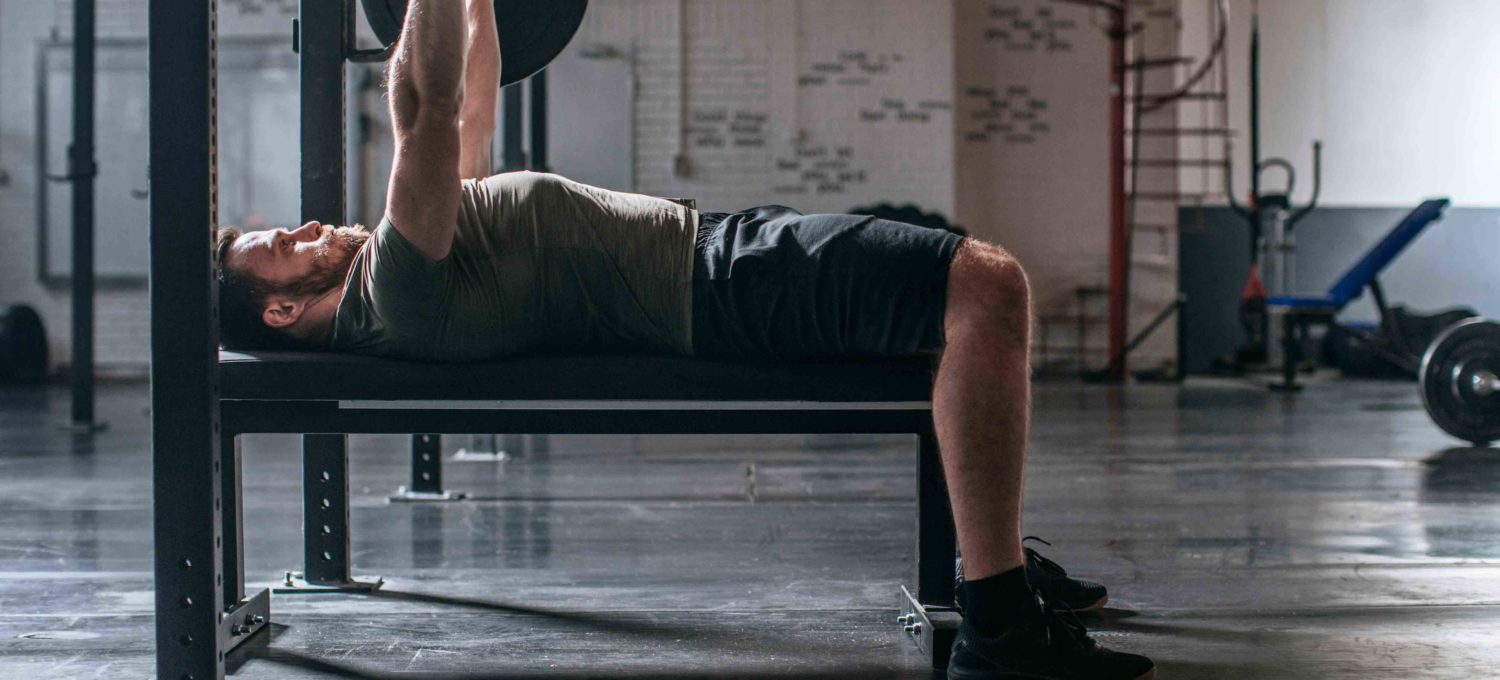The best chest exercises for a big chest
Build a bigger, stronger and more defined torso by including the best chest exercises in your upper-body workouts, says New Body Plan creator and Men’s Fitness cover model Jon Lipsey
Want a big, wide and impressive chest? We thought so. And that’s why we’ve put together this expert guide on the best chest exercises so you can achieve your better-body goal. If you want bigger, eye-catching biceps, don’t miss our complete guide to arms training to make that dream a reality too!
The best chest exercises for a big chest
Press-up
Best chest exercise for: working your chest without any equipment
Targets: Chest, triceps, front shoulders, core
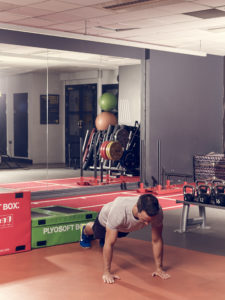
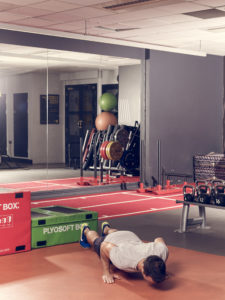
Why? This humble bodyweight exercise is so often overlooked by many gym-goers as being “too easy” to be effective, or not exciting enough to get results. But it’s one of the best chest exercises. Why? Because if you do it right there’s no better anytime-and-anywhere move to add size, strength and definition to your chest, as well as your triceps, shoulders and abs. We love press-ups so much we’ve dedicated an entire article to the best press-up variations to sculpt a bigger and broader chest.
How? Get into a press-up position with your hands flat on the floor so that your wrist, elbow and shoulder joints are aligned. Have you feet close together, but you can move them further apart to make the exercise slightly easier.
Engage your abs and glutes then raise you hips so that your body forms a straight line from your head to heels, then bend your elbows to lower your torso down towards the ground. Keep your elbows tight to your torso; don’t let them flare out to the sides. Pause at the bottom position when your chest is closest to the ground, then press back up powerful to return to that start. That’s one rep.
Dumbbell bench press
Best chest exercise for: building chest size and strength
Targets: Chest, triceps, front shoulders
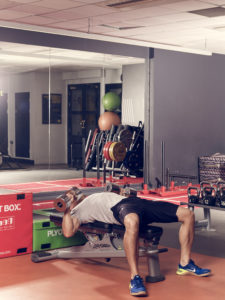
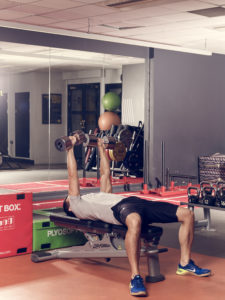
Why? The dumbbell bench press is a proven big-chest builder because it works your entire chest. Using dumbbells means you can’t go as heavy as when lifting with a barbell, but by working each side of your body independently you assure yourself of balanced muscle gains.
How? Lie flat on a bench holding a dumbbell in each hand. Keep your feet flat on the floor and your back pressed hard against the bench. Press the weights directly up so they meet over the middle of your chest, then slowly lower them back down to the start position. That’s one rep.
The chest and tricep workout for a broader chest and bigger arms
Incline dumbbell bench press
Best chest exercise for: targeting the upper chest and shoulders
Targets: Upper chest, triceps, front shoulders
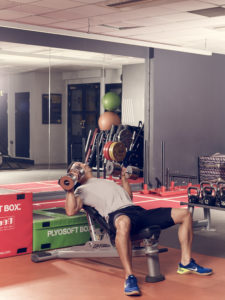
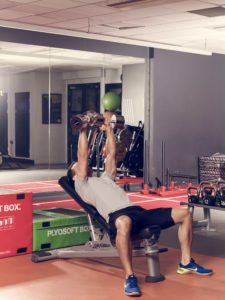
Why? Doing the incline dumbbell bench press means you can’t lift as heavy as when doing flat dumbbell bench presses, but it shifts more of the workload onto the upper portion of your chest muscles (and the front of your shoulders) to work them even harder.
How? Lie on an incline bench then follow the same form guidelines as for the dumbbell bench press.
Decline dumbbell bench press
Best chest exercise for: targeting your lower chest
Targets: Lower chest, triceps, front shoulders
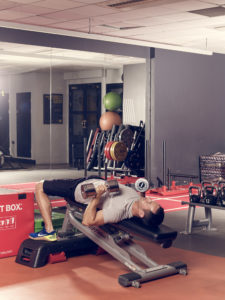
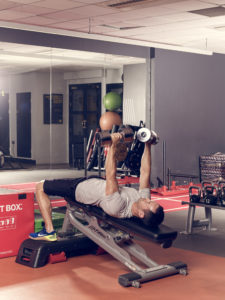
Why? Lying on a decline bench shifts the workload to the lower part of your chest, so can help bring out greater pec definition. You should be able to lift as heavy, or even heavier, than in the flat dumbbell bench press. But it’s worth recruiting the aid of a spotter to help you get in to – and out of – position safely.
How? Lie on an decline bench, with your feet supported, then follow the form-guide instructions as for the dumbbell bench press.
Barbell bench press
Best chest exercise for: maximum muscle
Targets: Chest, triceps, front shoulders
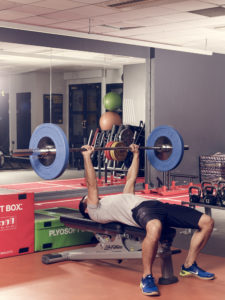
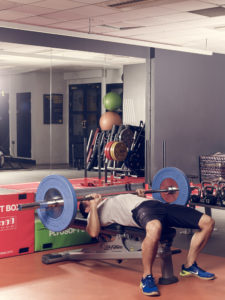
Why? The barbell bench press is the classic “big lift” for the upper body – and with very good reason. It works all parts of your chest, as well as your triceps and front shoulders. And using a barbell means you can lift significantly more weight than when using dumbbells. As the weight on the bar gets heavier it’s worth getting a spotter to ensure you lift safely.
How? Lie flat on a bench with your feet planted on the floor and your upper back and bum firmly pushing down into the bench. Grip the bar with a double-overhand grip and your arms at least shoulder-width apart.
(The wider your grip the greater the emphasis on the chest muscles; the narrow the grip the more the triceps are involved – but never take a grip narrower than shoulder-width apart because this can place too much stress on your shoulder, elbow and wrist joints.)
Slowly lower the bar down to your chest at around nipple height, then press the bar back up powerfully to return to the start position. That’s one rep.
Incline barbell bench press
Best chest exercise for: building upper chest size and strength
Targets: Upper chest, triceps, front shoulders
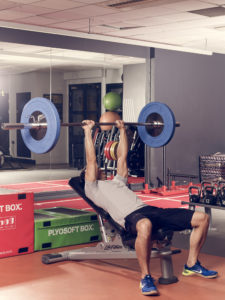
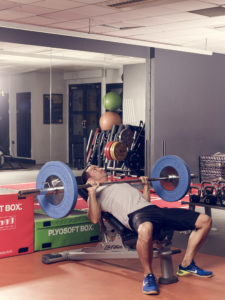
Why? The incline angle means you can’t have as much weight on the bar but it will shift more of the emphasis on to the upper portion of your pectorals, whilst also asking more work of the front shoulders.
How? Lie on an incline bench then follow the same form instructions as for the flat barbell bench press.
Decline barbell bench press
Best chest exercise for: building lower chest size and strength
Targets: Lower chest, triceps, front shoulders
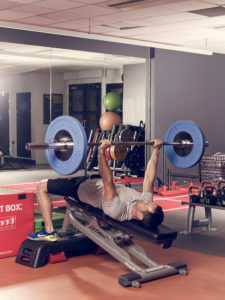
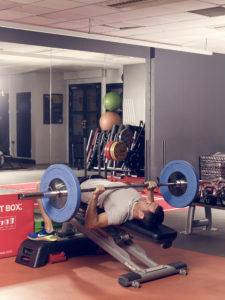
Why? Pressing from a decline angle means you may be able to lift more weight than when lifting on a flat bench to work the muscles harder, and you’ll move more focus to the lower portion of your pecs to help develop greater muscular definition.
How? Lie on a decline bench with your feet supported or secured, then follow the same form instructions for the flat barbell bench press.
Incline dumbbell flye
Best chest exercise for: isolating the chest muscles
Targets: Chest, front shoulders
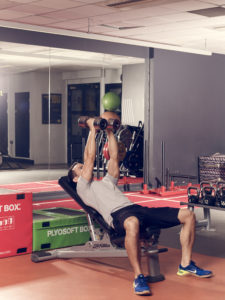
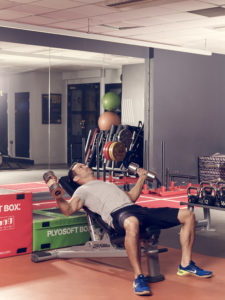
Why? The dumbbell flye is one of the best chest exercises because it’s a rare lift in that it requires the pecs to do almost all of the heavy lifting. The front shoulders are involved, but it’s the pecs that must lower the weights our to the sides, then squeeze together to raise the weights back up to the top starting position.
This exercise can place a lot of strain on the delicate shoulder joint, so start with a light pair of dumbbells to fully master the movement pattern and only then start increasing the weight. You can also do the standing cable flye, which is more of a beginner-friendly best chest exercise.
How? Lie on an incline bench with your feet flat on the floor and your back against the bench. Hold a dumbbell in each hand with only a very slight bend in your arms so that the weights touch over the middle of your chest.
Keeping your chest up and maintaining that slight bend in your arms, slowly lower the weights out to the sides until you feel a good stretch across the whole of your chest. Squeeze your chest muscles to raise your arms and the weights back up to the start position. That’s one rep.
Machine chest press
Best chest exercise for: lifting to failure
Targets: Chest, triceps, front shoulders
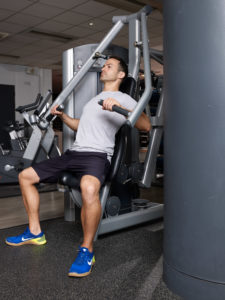
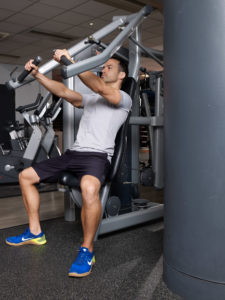
Why? The machine press is one of the very best chest exercises for anyone who wants a bigger chest – from a complete beginner stepping into the gym for the first time right up to a professional bodybuilder.
The fixed movement pattern of gym machines means you can lift very heavy fairly safely. Why? Because there is no risk to your small stabilising muscles that are often the limiting factor in free weight (dumbbell and barbell) exercises. Make sure the handles are set at nipple height to avoid excessive shoulder, elbow or wrist joint strain. Most machines have an adjustable seat so you can position yourself correctly.
How? Position yourself safely in the machine so that the handles are around nipple height. Plant your feet into the floor, keep your chin up and your chest up and push your back hard into the padded seat).
Hold the handles with at least a shoulder-width grip, then push them forwards until your arms at almost or fully straight. Slowly lower them back to the start position, controlling the weight throughout. That’s one rep.
High-to-low cable flye
Best chest exercise for: applying constant tension across the chest muscles
Targets: Chest, front shoulders
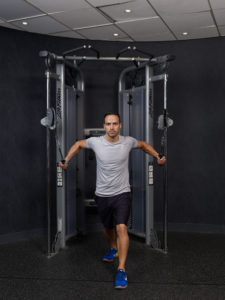
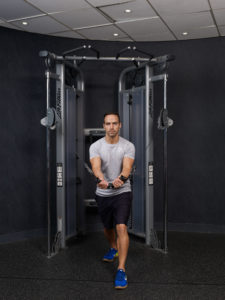
Why? The standing cable flye works the chest and front shoulders in a similar way to the incline dumbbell flye, but allows you to lift heavier weights without placing too much strain on the should or elbow joints (so long as you lift properly and pay full attention to form).
Bringing your hands together when they meet in front of your body and twisting your wrists to your little fingers touch gives a really nice and hard contraction in the middle of your chest, which can contribute to greater pec size and definition.
How? Stand tall in the middle of a cable machine with a split-foot stance to aid your balance. Hold in each hand a D-handle cable attachment, that’s affixed to the high pulley on each side of the machine.
With your chest up and abs engaged, and keeping a slight bend in each elbow, bring your hands down and together in a smooth arc from shoulder height so they meet in front of your belly button. Twist your wrists to bring your little fingers together to hit the muscle fibres of your middle chest. After pausing for a second, slowly return to the start position, maintaining complete control of the weight throughout. That’s one rep.
Cable straight-arm pulldown
Best chest exercise for: working your chest and lats at the same time
Targets: Chest, front shoulders, lats
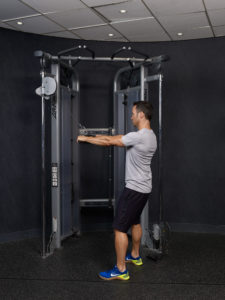
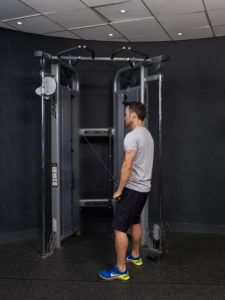
Why? The cable straight-arm pulldown is a rare best chest exercise – this time for being one of only a couple of moves – including the dumbbell pullover – that works your chest and back at the same time.
But just because your back – specifically your lats – get involved doesn’t mean you should disregard this very useful chest-building cable move.
It’s great because it works the muscle fibres of your chest chest in an arms up-and-down movement, unlike almost all other chest lifts, in which your arms either move out-and-in, or in-and-out to the sides. And remember, the more muscle fibres you can target in a session, the faster you’ll achieve that broader chest you want
How? Stand straight and tall with your chest up and abs tight in front of a cable machine with a straight-bar attachment affixed to the high pulley. Take a few step backwards then hinge forward from the hips until your arms are fully straight and there’s some tension in the cable.
From them, pull the bar down in a smooth arc until it touches your thighs. Pause and hold this position for a second then slowly and under complete control reverse the movement to return the bar back to the starting position. That’s one rep.
Find your perfect fat-loss plan!
Take the New Body quiz!
3 things I wish I’d known when trying to get lean and lose weight

